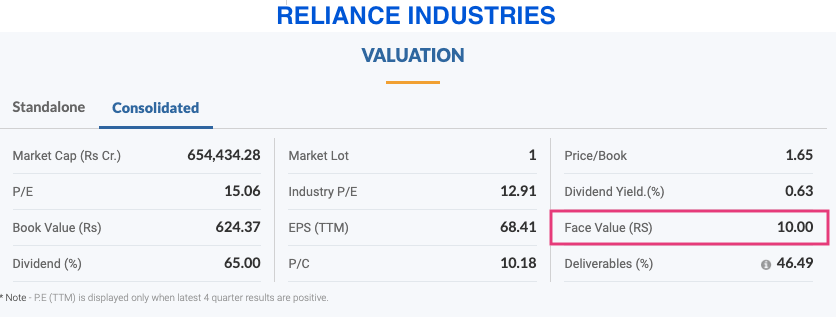Face Value is the nominal value of each share, which is decided by the company when it initially issues shares. The Face Value only changes when the company decides to split its shares.
The Face Value is different from the market value, which is significantly higher in most cases – at least in the case of most good companies.
For example, the current market price of Reliance Industries as on 30 March 2020 is ₹ 1030 per share. The Face Value of each Reliance share is ₹ 10.
If you purchase a share of Reliance today, you are paying a premium of ₹ 1020 for each share which has a Face Value of ₹ 10.
In case of Penny stock, the face value of the company may be higher than its market value. Penny stocks are companies that have market value of less than ₹ 20 per share. In such cases, the face value of the company may be ₹ 10 and the market price could be ₹ 5.
Face Value and Dividend
Face Value has significance when a company announces dividend. The number announced is in percentage.
For example, a headline may read “Reliance Industries announces 100% dividend” – This means Reliance will pay 100% of the ‘face value’ of a share as dividend.
The ‘Face Value’ of Reliance Industries share is ₹ 10. So, for every share of Reliance that you have in your demat account, you will received ₹ 10 in your bank account.
If the ‘Face Value’ is ₹ 5 and a company announces 50% dividend, then share holders will get ₹ 2.5 for every share they have in their demat account.
Face Value on MoneyControl
Go to the Moneycontrol website in the browser or the mobile app. Search for any company of your choice. We have used Reliance Industries for our example.
If you are using your laptop or desktop computer, scroll down, you will find the Face Value in the valuation section. As shown in the image below.
In the mobile application, it’s in the ‘Statistics’ section.


Leave a Comment